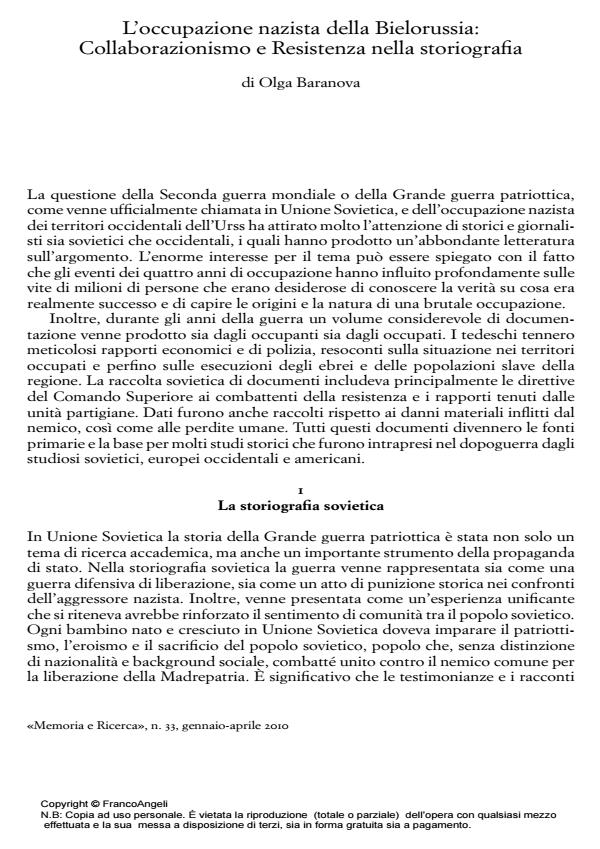The The Nazi Occupation of Belarus: Collaboration and Resistance in Historiography
Journal title MEMORIA E RICERCA
Author/s Olga Baranova
Publishing Year 2010 Issue 2010/33
Language Italian Pages 26 P. 153-178 File size 342 KB
DOI 10.3280/MER2010-033010
DOI is like a bar code for intellectual property: to have more infomation
click here
Below, you can see the article first page
If you want to buy this article in PDF format, you can do it, following the instructions to buy download credits

FrancoAngeli is member of Publishers International Linking Association, Inc (PILA), a not-for-profit association which run the CrossRef service enabling links to and from online scholarly content.
The article examines how different issues of the Second World war and the Nazi occupation of Belarus were presented and treated in the Soviet historiography, Western historiography of the Cold War period, and post-communist Russian and Belarusian historiographies. The special focus of the analysis is on the representation of such controversial issues as resistance, Soviet partisan movement, and cooperation by some Belarusian people, at that time Soviet citizens, with the German occupation authorities. The article highlights the main themes and terminology used in Soviet and Western writings in the 1950s - 1980s and demonstrates how often ideological bias and particular political situation of the period in which history is written affects the views and approaches that historians take in their studies. Furthermore, it analyzes the main changes that occurred in historiography after the collapse of communism and examines how the same issues: war-time collaboration and resistance, were discussed in the post-Soviet period, in the 1990s - beginning of the 2000s, by Western, Russian and Belarusian scholars.
Keywords: Historiography, Occupation, War-time Cooperation, Resistance, Soviet Union, Cold War ideology.
Olga Baranova, L’occupazione nazista della Bielorussia: Collaborazionismo e Resistenza nella storiografia in "MEMORIA E RICERCA " 33/2010, pp 153-178, DOI: 10.3280/MER2010-033010